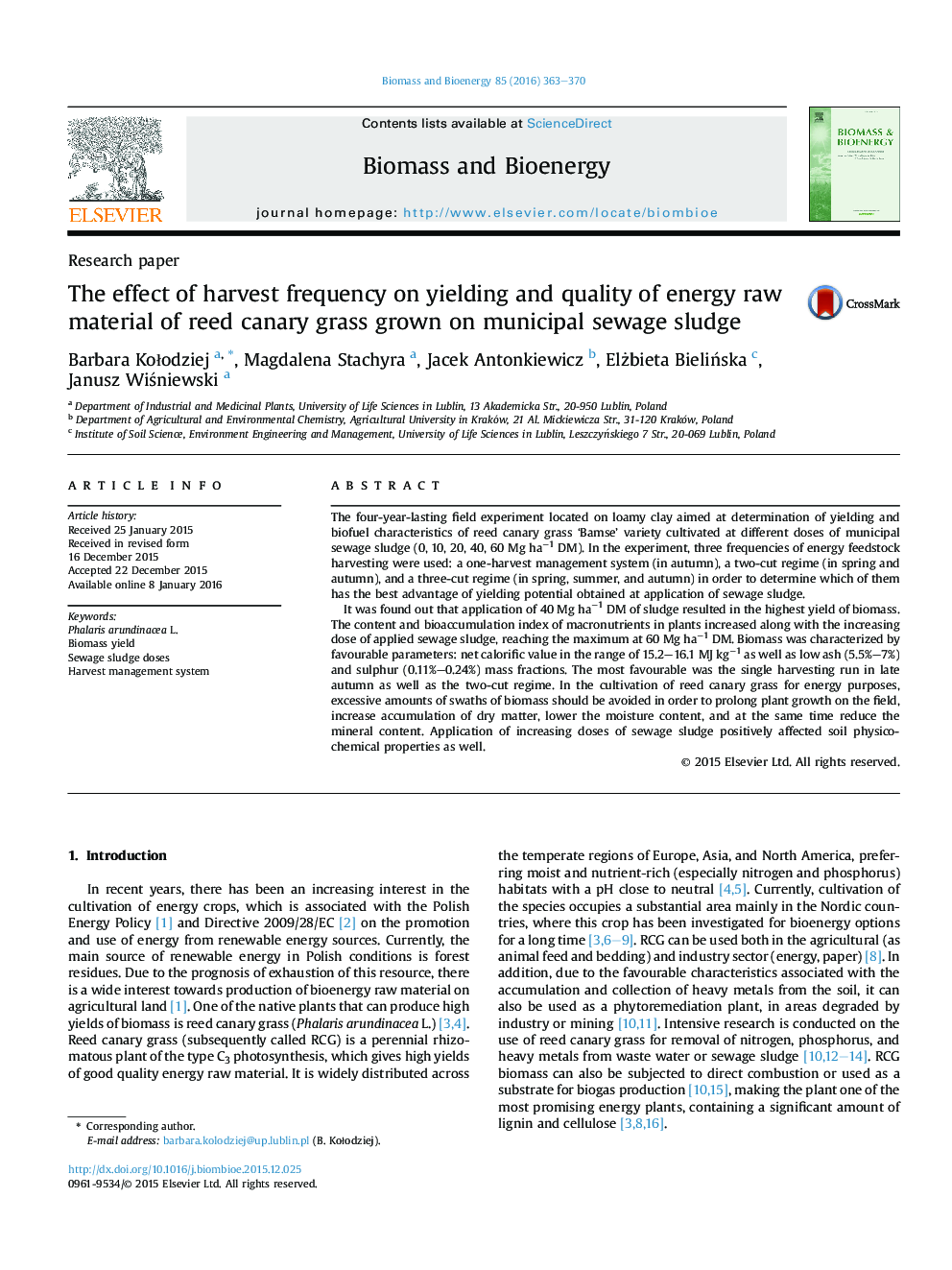| Article ID | Journal | Published Year | Pages | File Type |
|---|---|---|---|---|
| 7063576 | Biomass and Bioenergy | 2016 | 8 Pages |
Abstract
It was found out that application of 40 Mg haâ1 DM of sludge resulted in the highest yield of biomass. The content and bioaccumulation index of macronutrients in plants increased along with the increasing dose of applied sewage sludge, reaching the maximum at 60 Mg haâ1 DM. Biomass was characterized by favourable parameters: net calorific value in the range of 15.2-16.1 MJ kgâ1 as well as low ash (5.5%-7%) and sulphur (0.11%-0.24%) mass fractions. The most favourable was the single harvesting run in late autumn as well as the two-cut regime. In the cultivation of reed canary grass for energy purposes, excessive amounts of swaths of biomass should be avoided in order to prolong plant growth on the field, increase accumulation of dry matter, lower the moisture content, and at the same time reduce the mineral content. Application of increasing doses of sewage sludge positively affected soil physico-chemical properties as well.
Keywords
Related Topics
Physical Sciences and Engineering
Chemical Engineering
Process Chemistry and Technology
Authors
Barbara KoÅodziej, Magdalena Stachyra, Jacek Antonkiewicz, Elżbieta BieliÅska, Janusz WiÅniewski,
